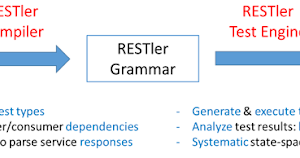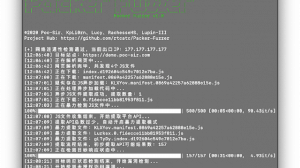
Google’s research sets out hijacking victims’ email providers and geographic locations.
Image: Google
Google has released the results of a year-long investigation into Gmail account hijacking, which finds that phishing is far riskier for users than data breaches, because of the additional information phishers collect.
Hardly a week goes by without a new data breach being discovered, exposing victims to account hijacking if they used the same username and password on multiple online accounts.
While data breaches are bad news for internet users, Google’s study finds that phishing is a much more dangerous threat to its users in terms of account hijacking.
In partnership with the University of California Berkeley, Google pointed its web crawlers at public hacker forums and paste sites to look for potential credential leaks. They also accessed several private hacker forums.
The blackhat search turned up 1.9 billion credentials exposed by data breaches affecting users of MySpace, Adobe, LinkedIn, Dropbox and several dating sites. The vast majority of the credentials found were being traded on private forums.
Despite the huge numbers, only seven percent of credentials exposed in data breaches match the password currently being used by its billion Gmail users, whereas a quarter of 3.8 million credentials exposed in phishing attacks match the current Google password.
The study finds that victims of phishing are 400 times more likely to have their account hijacked than a random Google user, a figure that falls to 10 times for victims of a data breach. The difference is due to the type of information that so-called phishing kits collect.
Phishing kits contain prepackaged fake login pages for popular and valuable sites, such as Gmail, Yahoo, Hotmail, and online banking. They’re often uploaded to compromised websites, and automatically email captured credentials to
the attacker’s account.
Phishing kits enable a higher rate of account hijacking because they capture the same details that Google uses in its risk assessment when users login, such as victim’s geolocation, secret questions, phone numbers, and device identifiers.
The researchers find that 83 percent of 10,000 phishing kits collect victims’ geolocation, while 18 percent collect phone numbers. By comparison, fewer than 0.1 percent of keyloggers collect phone details and secret questions.
The study finds that 41 percent of phishing kit users are from Nigeria based on the geolocation of the last sign-in to a Gmail account used to receive stolen credentials. The next biggest group is US phishing-kit users, who account for 11 percent.
Interestingly, the researchers found that 72 percent of the phishing kits use a Gmail account to send captured credentials to the attacker. By comparison, only 6.8 percent used Yahoo, the second most popular service for phishing-kit operators. The phishing kits sent were sending 234,887 potentially valid credentials every week.
Gmail users also represent the largest group of phishing victims, accounting for 27 percent of the total in the study. Yahoo phishing victims follow at 12 percent. However, Yahoo and Hotmail users are the largest group of leaked credential victims, both representing 19 percent, followed by Gmail at 12 percent.
They also found most victims of phishing were from the US, whereas most victims of keyloggers were from Brazil.
The researchers note that two-factor authentication can mitigate the threat of phishing, but acknowledges that ease of use is an obstacle to adoption.





















Add Comment